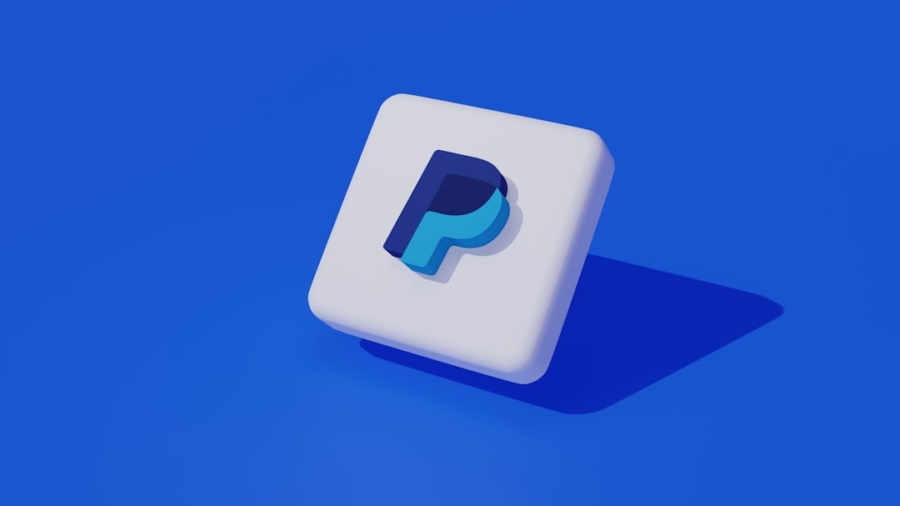Peer-to-peer (P2P) lending platforms have emerged as a transformative force in the financial landscape, reshaping how individuals and businesses access capital. These platforms facilitate direct lending between borrowers and investors, bypassing traditional financial institutions such as banks. The concept of P2P lending is rooted in the idea of democratizing finance, allowing individuals to lend and borrow money without the constraints and fees typically associated with conventional banking systems.
By leveraging technology, P2P lending platforms create an online marketplace where borrowers can present their needs and investors can choose whom to fund based on risk assessments and potential returns. The rise of P2P lending can be attributed to several factors, including the increasing demand for alternative financing options, the proliferation of digital technology, and a growing distrust of traditional banking systems following the 2008 financial crisis. As banks tightened their lending criteria, many individuals and small businesses found themselves unable to secure loans through conventional means.
P2P lending platforms stepped in to fill this void, offering a more accessible and often more affordable means of obtaining funds. This innovative approach not only benefits borrowers but also provides investors with opportunities to earn attractive returns on their capital, thus creating a win-win scenario in the financial ecosystem.
Key Takeaways
- Peer-to-peer lending platforms provide an alternative way for individuals and businesses to access finance outside of traditional banking systems.
- Peer-to-peer lending has the potential to increase access to finance for underserved populations and small businesses, helping to bridge the gap in traditional banking.
- Success stories of peer-to-peer lending platforms showcase how they have helped individuals and businesses secure funding that may have been difficult to obtain through traditional channels.
- Despite its benefits, peer-to-peer lending also comes with challenges and risks, including the potential for default and lack of regulatory oversight.
- The future of peer-to-peer lending and access to finance will depend on how platforms navigate regulation, manage risk, and continue to fill the gap in traditional banking for those in need of financial support.
The Impact of Peer-to-Peer Lending on Access to Finance
The impact of peer-to-peer lending on access to finance is profound, particularly for underserved populations who have historically faced barriers in obtaining credit. Traditional banks often rely on rigid credit scoring models that may exclude individuals with limited credit histories or those who do not meet conventional lending criteria. P2P lending platforms, on the other hand, utilize alternative data sources and more flexible underwriting processes to assess borrower risk.
This approach allows them to extend credit to a broader range of applicants, including those with non-traditional backgrounds or lower credit scores. Moreover, P2P lending has significantly reduced the cost of borrowing for many individuals and small businesses. By eliminating intermediaries and reducing overhead costs associated with traditional banking, these platforms can offer lower interest rates compared to conventional loans.
For instance, a borrower seeking a personal loan through a P2P platform may find rates that are several percentage points lower than those offered by banks. This reduction in borrowing costs can have a substantial impact on borrowers’ financial well-being, enabling them to invest in education, home improvements, or business ventures that might otherwise be out of reach.
Case Study: Success Stories of Peer-to-Peer Lending Platforms

One notable success story in the realm of peer-to-peer lending is that of LendingClub, one of the first P2P platforms to gain significant traction in the United States. Founded in 2006, LendingClub has facilitated billions of dollars in loans across various categories, including personal loans, business loans, and auto refinancing. The platform’s innovative model allows borrowers to apply for loans online, where they are matched with investors willing to fund their requests.
By streamlining the application process and providing quick access to funds, LendingClub has empowered countless individuals to achieve their financial goals. Another compelling example is Funding Circle, which focuses specifically on small business loans. Established in 2010 in the UK, Funding Circle has expanded its operations globally and has become a leading platform for small business financing.
The platform connects small businesses seeking capital with investors looking for opportunities to support entrepreneurship. By providing loans that are often more accessible than those offered by traditional banks, Funding Circle has played a crucial role in fostering economic growth and job creation. Many small businesses have reported that the funding received through Funding Circle has enabled them to expand operations, hire new employees, and invest in innovative projects.
Challenges and Risks of Peer-to-Peer Lending
Despite its many advantages, peer-to-peer lending is not without its challenges and risks. One significant concern is the potential for borrower default. While P2P platforms employ various risk assessment tools to evaluate borrowers’ creditworthiness, there remains an inherent risk that some borrowers may fail to repay their loans.
This risk is particularly pronounced during economic downturns when unemployment rates rise and individuals may struggle to meet their financial obligations. Investors must be aware of this risk and consider diversifying their portfolios across multiple loans to mitigate potential losses. Additionally, the lack of regulation in some regions poses challenges for both borrowers and investors.
While many P2P platforms operate under specific regulatory frameworks, others may not be subject to stringent oversight. This lack of regulation can lead to issues such as predatory lending practices or inadequate borrower protections. Investors may find themselves exposed to fraudulent schemes or platforms that do not adhere to best practices in risk management.
As the industry continues to evolve, it is crucial for stakeholders to advocate for appropriate regulatory measures that protect all parties involved in P2P lending transactions.
Regulation and Oversight of Peer-to-Peer Lending Platforms
The regulatory landscape for peer-to-peer lending varies significantly across different jurisdictions, reflecting the diverse approaches taken by governments worldwide. In the United States, for example, P2P lending platforms are subject to federal securities laws and state regulations that govern consumer lending practices. The Securities and Exchange Commission (SEC) oversees the issuance of securities related to P2P loans, ensuring that investors receive adequate disclosures about the risks involved.
Additionally, state regulators may impose licensing requirements on P2P platforms to protect consumers from potential abuses. In contrast, some countries have adopted more lenient regulatory frameworks that allow P2P lending platforms to operate with minimal oversight. This lack of regulation can create an environment where unscrupulous operators may exploit borrowers or investors without fear of repercussions.
As the popularity of P2P lending continues to grow, there is an increasing call for harmonized regulations that promote transparency and accountability while fostering innovation within the industry. Striking the right balance between regulation and flexibility is essential for ensuring the long-term sustainability of P2P lending as a viable alternative to traditional finance.
The Future of Peer-to-Peer Lending and Access to Finance

Looking ahead, the future of peer-to-peer lending appears promising as technology continues to advance and consumer preferences evolve. The integration of artificial intelligence (AI) and machine learning into P2P platforms is likely to enhance risk assessment processes further, allowing for more accurate evaluations of borrower creditworthiness. These technologies can analyze vast amounts of data from various sources, enabling lenders to make informed decisions while minimizing default risks.
Moreover, as financial literacy improves among consumers, more individuals are likely to explore alternative financing options such as P2P lending. The growing acceptance of digital financial services will contribute to increased participation in these platforms by both borrowers and investors. Additionally, as traditional banks continue to face pressure from fintech innovations, they may adapt by incorporating elements of P2P lending into their offerings or partnering with established platforms to enhance their service delivery.
How Peer-to-Peer Lending Platforms Are Filling the Gap in Traditional Banking
Peer-to-peer lending platforms are effectively filling gaps left by traditional banking institutions by providing accessible financing solutions tailored to diverse needs. For instance, individuals with limited credit histories or those who are self-employed often struggle to secure loans from banks due to stringent requirements. P2P platforms address this issue by considering alternative data points such as payment histories for utilities or rent, allowing them to assess creditworthiness more holistically.
Furthermore, small businesses frequently encounter challenges when seeking funding from banks due to lengthy application processes and rigid criteria. P2P lending platforms streamline this process by offering quick approvals and flexible terms that cater specifically to entrepreneurs’ needs. This agility enables small businesses to access capital promptly when opportunities arise or when they need funds for operational expenses or growth initiatives.
By facilitating access to finance for small businesses that might otherwise struggle with traditional banking channels, these platforms play a vital role in fostering innovation and economic resilience within communities.
The Role of Peer-to-Peer Lending in Expanding Access to Finance
Peer-to-peer lending has emerged as a significant player in expanding access to finance for individuals and businesses alike. By leveraging technology and innovative business models, these platforms have democratized borrowing and investing opportunities while providing alternatives that challenge traditional banking norms. As they continue to evolve amidst regulatory changes and technological advancements, P2P lending platforms hold the potential not only to enhance financial inclusion but also to reshape the broader financial landscape for years to come.
The ongoing dialogue surrounding regulation will be crucial in ensuring that these platforms operate transparently while safeguarding both borrowers and investors from potential risks. As stakeholders work together towards establishing best practices within the industry, peer-to-peer lending can solidify its position as a vital component of modern finance—one that empowers individuals and fosters economic growth across diverse sectors.
In the rapidly evolving landscape of financial technology, peer-to-peer lending platforms are playing a crucial role in democratizing access to credit. These platforms are not only providing borrowers with more options but are also offering investors new avenues for returns. A related article that delves into the broader tech industry, including the financial sector, is “Discover the Best Paying Jobs in Tech 2023.” This article explores the lucrative opportunities within the tech industry, which is closely tied to the growth and innovation seen in peer-to-peer lending platforms. For more insights, you can read the full article here.
FAQs
What is peer-to-peer lending?
Peer-to-peer lending is a method of debt financing that enables individuals to borrow and lend money without the use of an official financial institution as an intermediary.
How do peer-to-peer lending platforms work?
Peer-to-peer lending platforms connect borrowers with individual lenders through an online platform. Borrowers create a listing for a loan request, and individual lenders can choose to fund a portion of the loan.
What are the benefits of peer-to-peer lending platforms?
Peer-to-peer lending platforms offer borrowers access to financing with potentially lower interest rates than traditional banks, and provide lenders with the opportunity to earn a return on their investment.
How are peer-to-peer lending platforms expanding access to financing?
Peer-to-peer lending platforms are expanding access to financing by providing an alternative to traditional banks, especially for individuals who may not qualify for loans through traditional channels.
What are the risks associated with peer-to-peer lending?
Risks associated with peer-to-peer lending include the potential for default by borrowers, lack of regulation compared to traditional banks, and the possibility of platform insolvency.

